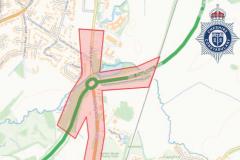Cheshire East Council is to adopt a revised strategy that will inform how it assesses any need for new crossings in the borough, following a public consultation.
The council receives many requests for new crossings, but unfortunately the demand outstrips the council's available budget, and it must prioritise requests.
The new strategy updates the existing policy, last updated in 2019 and the strategy sets out the methodology for considering requests for new pedestrian, cycle, and horse crossing facilities on our roads. These are both crossings controlled by traffic lights and those that are not.
The council does not have a statutory obligation to provide crossings but will aim to do so where there is a serious risk and need, or where third-party funding can finance the infrastructure, for example where a new development has significantly increased traffic volume.
A number of factors will continue to be taken into consideration when provision of a crossing is considered. These include:
· Reducing casualties and avoiding further serious road accidents,
· Encouraging sustainable travel,
· Supporting growth,
· Improving amenity, and
· Responding to local support.
All forms of transport, not just vehicles, will be assessed within the new strategy, which will also take into account factors that create demands for trips, whether they are to schools, local shops, health centres, or other community facilities. Elected ward members, town and parish councillors will be able to have their say.
Requests and proposals are reviewed on an annual basis.
A six-week consultation earlier this year showed that 65 per cent of participants agreed with the adoption of the revised strategy.
Councillor Mark Goldsmith, Cheshire East Council's chair of the highways and transport committee, said: "A proposal for a revised strategy for assessing pedestrian crossings in the borough first came before the council in January 2023 after the Department for Transport had updated its guidance in 2019.
"We are often inundated with requests for the installation of a new crossing and we simply cannot mee the public demand. Even when a request meets these revised criteria, the high cost of installation and ongoing maintenance costs severely limits our ability to install them.
"Therefore, with the council facing unprecedented financial challenges, requests for new crossings will be very difficult to finance. However, this new policy will also now allow us to consider lower cost alternatives too, such as traffic islands that also make it easier and safer to cross busy roads."
Click or information about the council's pedestrian crossing policy








